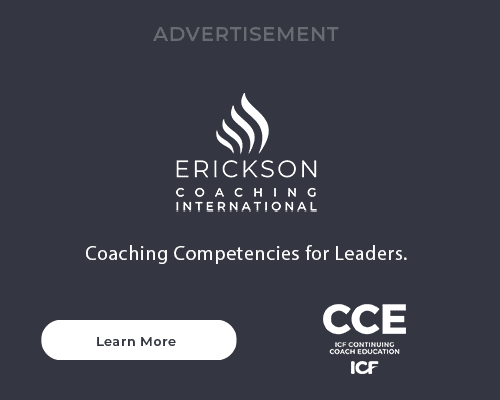Successful Coach Solopreneurs: Learnings Looking through the Rearview Mirror
I built a solo coaching practice from scratch over the past two years. Throughout this journey, I have come to recognize that it is helpful to look in the rearview mirror to scan the road behind and remember why I needed to course correct. I use this perspective to better navigate the journey ahead by growing a successful and profitable solo coaching practice.
How can you get to your destination faster, with fewer stops and wrong turns along the way? Pay attention to principles around VIP (Venture Group, Investment Timing, Pricing Simplification).
V is for Venture Group!
Pull together a “Venture Group” of coaches who will help you expand your perspective when you look in the rearview mirror and reflect on what went well and what did not as you have grown your practice to date. But there is so much more! Over time the trust between, nurturing of and respect for each member will grow as you embark on the journey together, perhaps at different speeds or in different cars but moving forward together, nevertheless. Your venture pals will serve as co-pilots, navigation systems, mechanics, blind spot indicators, comfort during treacherous driving conditions and driving companions.
What discussions might surface on the journey?
- Brainstorming on a tough engagement.
- Sharing of resources.
- Peer coaching.
- How to best provide unconditional support.
- Advice giving on social media.
- Debating pricing approaches. Teaming on engagements.
- Training on new technologies.
- How to best encourage one another.
You name it!
What are some guiding principles for success?
I have been in a venture group for more than two years. We have had some course corrections along the way. Here is my take on what makes for success:
- The group size should range from four to seven people to ensure variety of inputs and quorums for meetings.
- The meeting cadence should be paced and consistent. My group schedules 90-minute bimonthly meetings.
- The meeting format should be standardized in a way that works with the participants. For example, the group could share updates one by one (successes, struggles, resources, action items the coach wants to be held accountable for) and also zero in on a pre-determined topic like up-skilling, multiple income streams or partnership agreements.
You can co-create the road map for the fleet of cars you are driving. Recognize tune-ups and varying driving speeds will be required over the long haul (and perhaps new passengers). Be flexible! Be supportive!
I is for Pacing Your Investments!
Time your investments. Numerous coaches have over-invested early on in professional websites, support services, up-skilling, etc., before the scale of their businesses warranted the investment. Using the car metaphor, think through:
What kind of car is appropriate at this juncture?
Do you need a BMW, or will a KIA suffice? For example, yes, you need to have a professional looking website, but you do not need to engage a firm to develop brand identity at launch. (Some will disagree with me on this point.) Can you get by with basic and less expensive offshore resources? I’ll share my biggest over-investment faux pas. My vision for my practice was super-sized and thus I spent a good deal of money getting my business name trademarked! What drove that (poor) investment decision? Excitement? Yes! Ego? Yes, yes, yes! I wastefully spent for BMW-level service when KIA-level would have sufficed.
How can you test drive resources?
There are many “beginner level” service offerings to trial before purchase. Use them. Ask questions like,
- “Should I invest in a professional level CRM system in year 1?” No! When I trialed several using data on only 20 clients, I found them too onerous.
- “Do I need to get fully certified in multiple assessments up front?” No! You can get deeply familiar with some via self-study, then decide. I often ask coaches about their calendaring and scheduling systems (i.e., test drive). While I plan on making this investment, I don’t yet have the client volume to justify the expense in the near term.
P is for Simple Pricing!
Don’t let pricing get complicated! Recall when you bought a car and what it felt like, as a customer, to be on the receiving end of myriad pricing options? You say yes to the car but then….Should you lease or buy? Do you want the fabric or leather option? This exact model and color are not available, but you can have that model and color right now and the seller will waive delivery fees. If you pre-pay for service up front, it will save you money in the long run.
What’s the parallel with coaching pricing? I speak with coaches often about pricing approaches and hear rate frameworks along the lines of:
- Corporate versus direct private pay vs. education vs. not for profit vs. government
- On site vs. off site vs hybrid
- First vs. repeat engagement
- Hourly vs. retainer
- Basic vs. premium plan
- Offering vs. not offering corporate clients bulk pricing
The list goes on and on!
You will be served well following the KISS principle for pricing (Keep It Simple, Stupid). My model requires a six-month retainer for a bundle of goods. Price A is for corporate pay and Price B is for private pay (fewer services). Multiple pricing approaches create bedlam tracking and implementing, confusion in the marketplace, and lost credibility if prices fluctuate.
There you go! Lessons learned from looking in the rearview mirror as I built my solo practice. What would you add to the conversation? Please place your ideas in the comment section, and I will respond!
Copyright© 2020 Unlocked Leadership® All Rights Reserved




Great insights, Jill! Hope you are staying safe and well
like to train as a football Team Manager/Coach. I seek a reputable Institution in Europe
Thank you Jill for the insight. Very helpful, especially for new coaches like me that might be planning to start a career as a coach.
Great tips, Jill. I particularly found your simple pricing to be helpful.